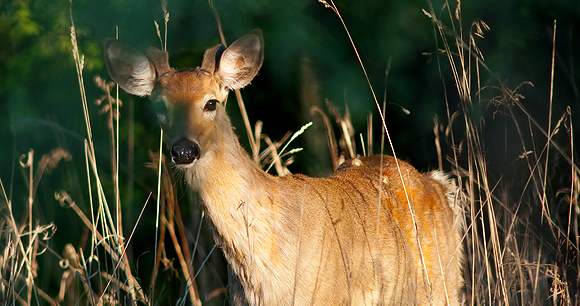
Traditionally ungulates were considered even or odd-toed hoofed animals, however, as genetics demonstrated new relationships between species, the number of animals who qualify as ungulates expanded. Ungulates include (but are not limited to) white-tailed deer, mule deer, tapir, camel, hippopotamus, giraffe, zebra, horse, elk, reindeer, pig, goat, sheep, caribou, bison, buffalo, musk ox, moose, pronghorn, and various antelope, gazelle and other deer species found in the U.S. and throughout the world.
While some species may be protected by national or international laws, most are subject to lethal exploitation through hunting or capture for trade. Some species are ranched (i.e., raised in a captive environment) to be used as hunting targets or for trade. In the US, white-tailed deer, mule deer, elk, bison, pronghorn and other ungulates are subject to lethal management for sport or through culling operations—particularly in urban and suburban areas where human expansion into wildlife habitat coupled with burgeoning ungulate populations make conflicts inevitable (e.g., white-tailed deer, whose populations have increased following the removal of natural predators). The weapons permitted to kill ungulates include rifles, muzzleloaders, bow and arrow, crossbows and other types of firearms. Nationally, millions of ungulates are killed annually.
Non-lethal management strategies for ungulates, including reproductive control, habitat manipulation, strategic fencing, and techniques to address ungulate-human conflicts are available and have been used effectively to manage ungulate populations.
Considering that the number and density of predators has been substantially reduced in most areas of the world and that the number of sport hunters in the US (and likely throughout the world) is declining, the use of non-lethal techniques to manage wild ungulates is of increasing importance.